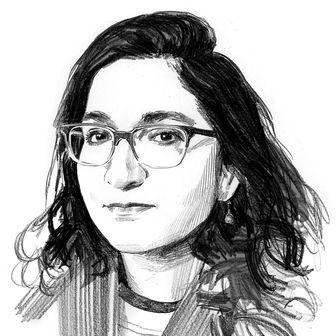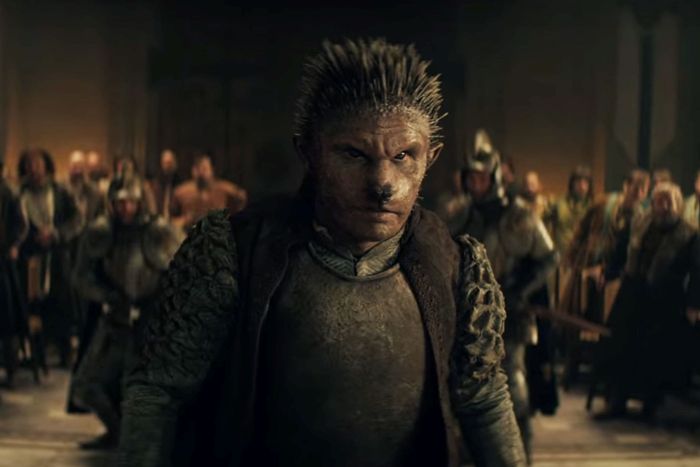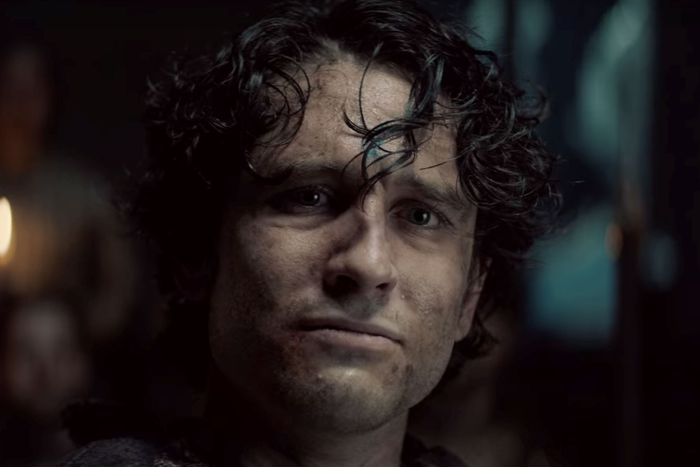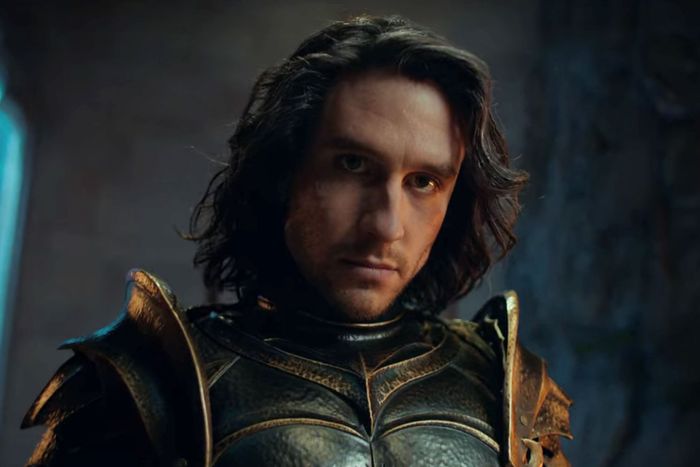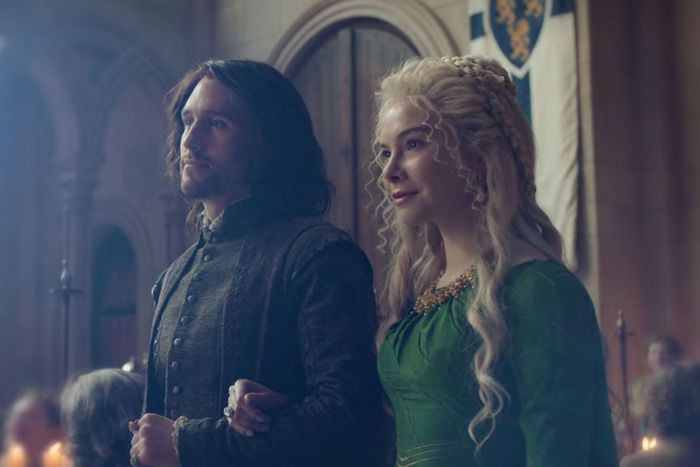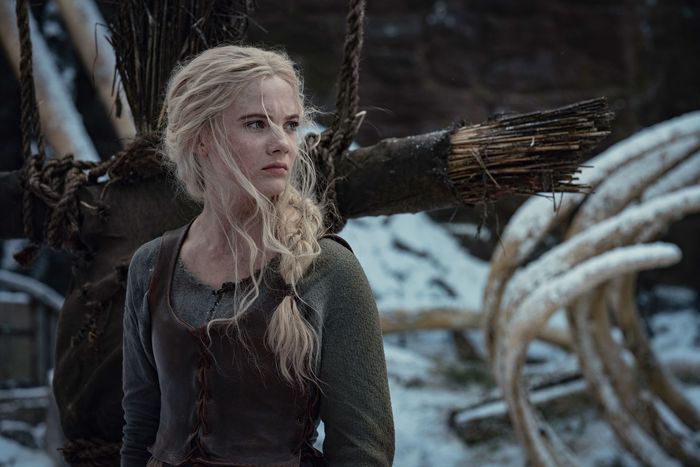
Spoilers follow for the second season of Netflix’s The Witcher.
The Witcher, a series that understands that Henry Cavill’s irritated glower is his second -most beguiling quality after the arm-gun-loading moment from Mission: Impossible–Fallout, ended its second season, which was released Friday, as so many Netflix shows do: with a reveal and a cliffhanger. After a season foregrounding more traditional fantasy elements — including a mentor-mentee relationship between Cavill’s Geralt of Rivia and his ward, Princess Ciri of Cintra, and a quest by the sorceress Yennefer of Vengerberg to understand what really fuels her magic — The Witcher laid out a narrative twist. In the closing moments of the finale, “Family,” director Ed Bazalgette and writer Lauren Schmidt Hissrich finally revealed the identity of the infamous White Flame, the leader of Nilfgaard — and it’s none other than Ciri’s biological father, Duny. Remember the hedgehog guy? That guy!
Back in episode four of season one, “Of Banquets, Bastards and Burials,” when the timeline of The Witcher was still divided in three, we meet Lord Urcheon of Erlenwald at the Cintran banquet Geralt attends with Queen Calanthe and her daughter, Pavetta. Urcheon is mocked for being from what the Cintrans call a “backwater hamlet” and for revealing himself to have a hedgehog face and fangs. Calanthe wants him dead, while Geralt refuses: “This is no monster. This knight has been cursed.” Lord Urcheon is there to claim Pavetta by the Law of Surprise (enraging Calanthe, who tries to kill him several more times), but eventually it’s revealed that Pavetta actually loves the knight she calls by the nickname “Duny” — and that she has the screaming power her daughter, Ciri, would also possess. Calanthe acquiesces, Pavetta and Duny are married, and their kiss breaks the curse to reveal Duny’s blandly handsome human face.
After Duny insists on paying Geralt for his help in standing against Calanthe, the Witcher begrudgingly claims the Law of Surprise. That flippant moment (or destiny, maybe!) gets him Ciri (with whom Pavetta is already pregnant) and sets up the father-daughter relationship that grows in season two.
We already knew Ciri was important, but the extent to which she is a big fucking deal becomes clearer as she continues to be pursued by the Black Knight Cahir Mawr Dyffryn aep Ceallach of Nilfgaard, grows closer to the Witchers, and draws the curiosity of Yennefer’s onetime lover Istredd. How does Ciri have Elder blood? What imbues her with all these magical abilities from breaking monoliths to portaling between various dimensions? What were her parents talking about the night they (allegedly) died in “Turn Your Back,” when Urcheon-Duny says, “They’d kill her if they knew”? And how does all of this connect to her father, the Nice Guy™ we met at that ball, actually being His Highness Emperor Emhyr var Emreis, the White Flame, the religious and military leader toward whom everyone in Nilfgaard — from Cahir to sorceress Fringilla — feels so much fear?
If you’ve read The Witcher books or played the video games, you know we’re jumping into this story line in the Netflix series somewhat earlier than it was explored in other media. Emhyr’s identity isn’t revealed until the fifth and final The Witcher book, The Lady of the Lake, and the third and final main-series video game, The Witcher 3: Wild Hunt. But the Netflix adaptation has been building toward an exploration of Ciri’s true identity fairly quickly: with Pavetta’s ability to speak Elder in “Of Banquets, Bastards and Burials”; with Ciri’s blood growing feainnewedd flowers at Kaer Morhen; with the Elven leader Francesca’s obsession with Ithlinne’s prophecy and how it will help her race; with Triss Merigold’s interaction with Elven sorceress and princess Lara Dorren, clutching the baby who represents a new bloodline, in Ciri’s subconscious; and with Istredd’s realization that the Cintran lineage includes Lara Dorren’s Elven blood, which is why Pavetta and Ciri both have powers and the latter has the ability to alter time and space.
Recall what Triss said about Ciri: “A seed that bursts into flame. You will destroy us all.” And remember what the Elves of the Wild Hunt, or Wraiths of Mörhogg, said to Ciri: “Child of the Elder Blood, starry-eyed Daughter of Chaos, join our Hunt. Your place is among us. You are ours.” And finally, what Istredd said to Francesca: Ciri is Hen Ikeir, the figure who can save the Elves on the Continent. Prophecies are the absolute worst because they can be adapted and translated endlessly, which is why everyone who learns about Ciri seemingly has a different take on who she is and what she means. (Harry Potter and Jon Snow can relate.)
The Witcher hasn’t provided many clues for what Emhyr’s motivations might be; between the first and second seasons, all we really know about Lord Urcheon–Duny is he was (seemingly) in love with Pavetta, impregnated her, and married her. Then they drowned, possibly because they were trying to flee from others who knew about Ciri’s fate. Similarly, definitive details about the White Flame are few. He’s referred to only by that moniker in the first season; in the second, we finally hear the name “Emhyr” associated with the him and learn from Fringilla in “Kaer Morhen” that he “returned” to Nilfgaard and killed “the Usurper” to take control. Since then, he’s been elevated to the status of an almost religious deity, and as Yennefer sarcastically says in “Redanian Intelligence,” he’s treated as “the benevolent White Flame, who brings purpose and meaning and all that fuckery.”
So is the White Flame’s grand plan elucidated any further now that we know he’s Duny? Not really — the prophecy remains our greatest guidance here and the reason for which Emhyr wants Ciri can go two different ways: If his daughter has the ability to end the world, Emhyr either wants to harness that and buoy Nilfgaard to a position over all other kingdoms (and maybe all other Spheres) or he wants to use Ciri to save the world — and probably also to rule over it. (If you’re thinking along the lines of “family legacy,” you’re getting warmer: In the books, another part of the prophecy suggests Ciri’s child will save and rule the world, so Emhyr plots to impregnate his daughter. My dude seems very intent on that “universal ruler” thing!)
A wrinkle in the Netflix series is that Geralt, Triss, Yennefer, and all else who become aware of the prophecy seem certain it refers only to Ciri, which is perhaps the series signaling they won’t go down the incest route. But even without that element, Emhyr’s survival raises all kinds of questions about his motivations and intentions: Did Emhyr manipulate Pavetta from the very beginning? Did he love her at all? Did he kill her? Where has the White Flame been biding all his time — why wait so long to lead Nilfgaard to attack Cintra and get his daughter back? How could he have ordered the death of the pureblood Elven child? Was he in league with Voleth Meir, the Deathless Mother? If that’s the case, why would part of Voleith Meir’s fantasy sequence for Ciri be an imagining of her parents? Doesn’t this all-knowing Baba Yaga figure sense Ciri’s dad is actually alive? Ma’am, aren’t you supposed to know all about pain or whatever?
Regardless of whether the series adapts the same (gross) plan Emhyr had for Ciri in the books and video games, season three will probably see The Witcher further exploring the Geralt-Ciri bond and the complicated alliances and betrayals between Nilfgaard and the Elves. “What is destined cannot be avoided,” Geralt says in the final minutes of “Family.” It’s pretty inarguable that part of Ciri’s destiny is having an asshole for a dad.


